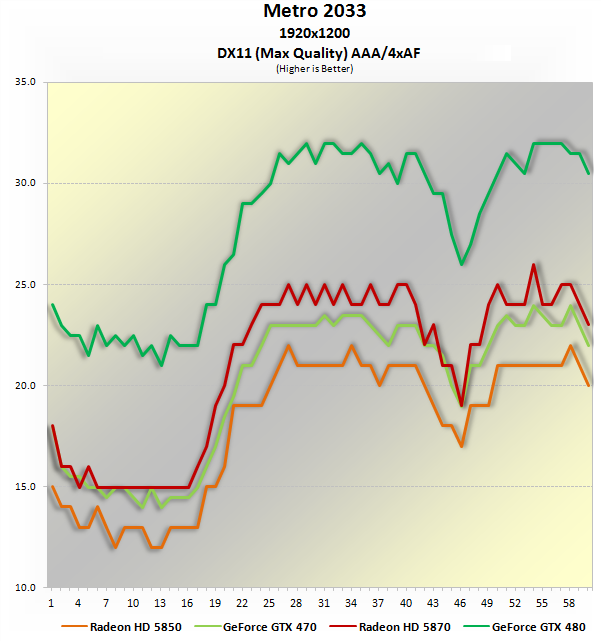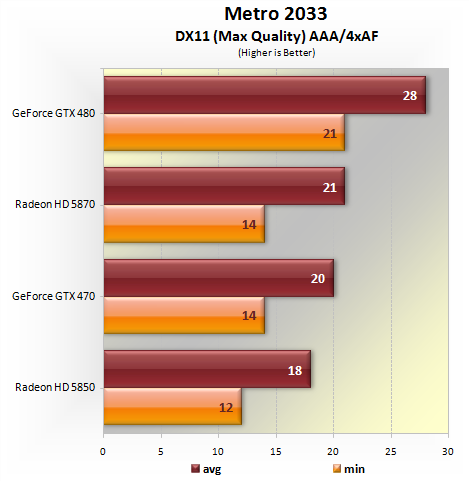Benchmarks: Metro 2033


For testing purposes FRAPS was used to record the first minute of gameplay in chapter one, level "Chase". This is a pre-scripted tunnel traveling scene where you are riding a hand cart with a couple of other tunnel dwellers. For the first half of the scene you have visual movement control but you cannot shoot or move the character, which provides a consistent environment for testing. Halfway through the level you are forced to defend the hand cart and your disabled comrades from enemy mutants to provide some gunfire and movement.
Metro 2033 is a newly released game that we did use to test the GeForce GTX 480 in our original review. However, our test settings upset Nvidia as we disabled tessellation. Our reason for this was simple, we found enabling it would degrade performance to a point where the game became unplayable. Even with tessellation disabled, frame rates were still in the lower ranges. The GeForce GTX 480 delivered 35fps on average, making it 5fps faster than the Radeon HD 5870.
Enabling tessellation provides the GeForce GTX 480 with an even larger performance advantage over the Radeon, however it comes with a hefty compromise. At 1920x1200 an average of 28fps is unacceptable in our opinion, more so considering that performance dips meant the game became quite laggy at times. The Radeon HD 5870 performed very poorly, matching the GeForce GTX 470, while the Radeon HD 5850 was slightly slower.
Nvidia claims a 7% increase in performance when playing Metro 2033 at 1920x1200 with tessellation turned on and while we cannot dispute this, the gains are clearly not enough to justify using this feature on a single GeForce GTX 480, again, in our opinion.